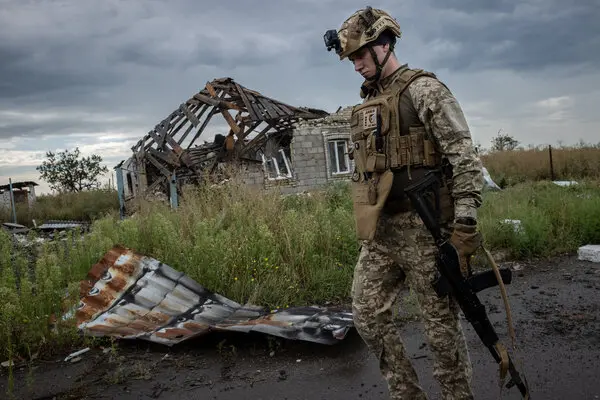Russian forces are advancing in Ukraine at their fastest pace since the early days of the 2022 invasion, capturing an area half the size of London over the past month, according to analysts and military observers Tuesday.
The Russian army seized approximately 235 square kilometers (91 square miles) in the past week alone, setting a 2024 record, reported independent Russian news group Agentstvo, citing data from combat footage analysis group DeepState. November’s total captured territory reached 600 square kilometers (232 square miles).

Russia’s Defense Ministry announced the capture of another village, Kopanky, in Kharkiv region Tuesday, though Ukraine’s third separate assault brigade claimed via Telegram it had cleared the area of Russian forces. Ukrainian military spokesman Nazar Voloshyn reported repelling a Russian advance on the logistics center of Kupiansk, the second such defense this month.
The main thrust of Russian advances has focused on Donetsk region, with forces pushing toward Pokrovsk and into Kurakhove. Russia currently controls 18% of Ukraine, including all of Crimea, over 80% of Donbas, more than 70% of Zaporizhzhia and Kherson regions, and just under 3% of Kharkiv region, according to open source maps.
Ukrainian President Volodymyr Zelenskiy has identified Putin’s main objectives as occupying the Donbas region, spanning Donetsk and Luhansk, and ousting Ukrainian troops from Russia’s Kursk region, where Ukraine maintains control of about 800 of the initially held 1,376 square kilometers.
Ukrainian military officials acknowledge the situation in the east is at its worst point this year. Zelenskiy attributed the challenges to several factors, including year-long delays in equipping brigades, partly due to prolonged U.S. Congressional deliberation over assistance packages.
The General Staff of Ukraine’s military reported repelling 23 Russian attempts to advance along the Kurakhove front line Tuesday evening, along with 25 attacks near Pokrovsk. Russian military bloggers suggest that breaking Ukrainian defenses around Kurakhove could enable a westward push toward Zaporizhzhia while securing rear positions for movements toward Pokrovsk.
Sergei Naryshkin, head of Russia’s Foreign Intelligence Service, claimed Russia now holds “complete strategic initiative on the battlefield,” as the conflict enters what Russian and Western officials describe as potentially its most dangerous phase.



